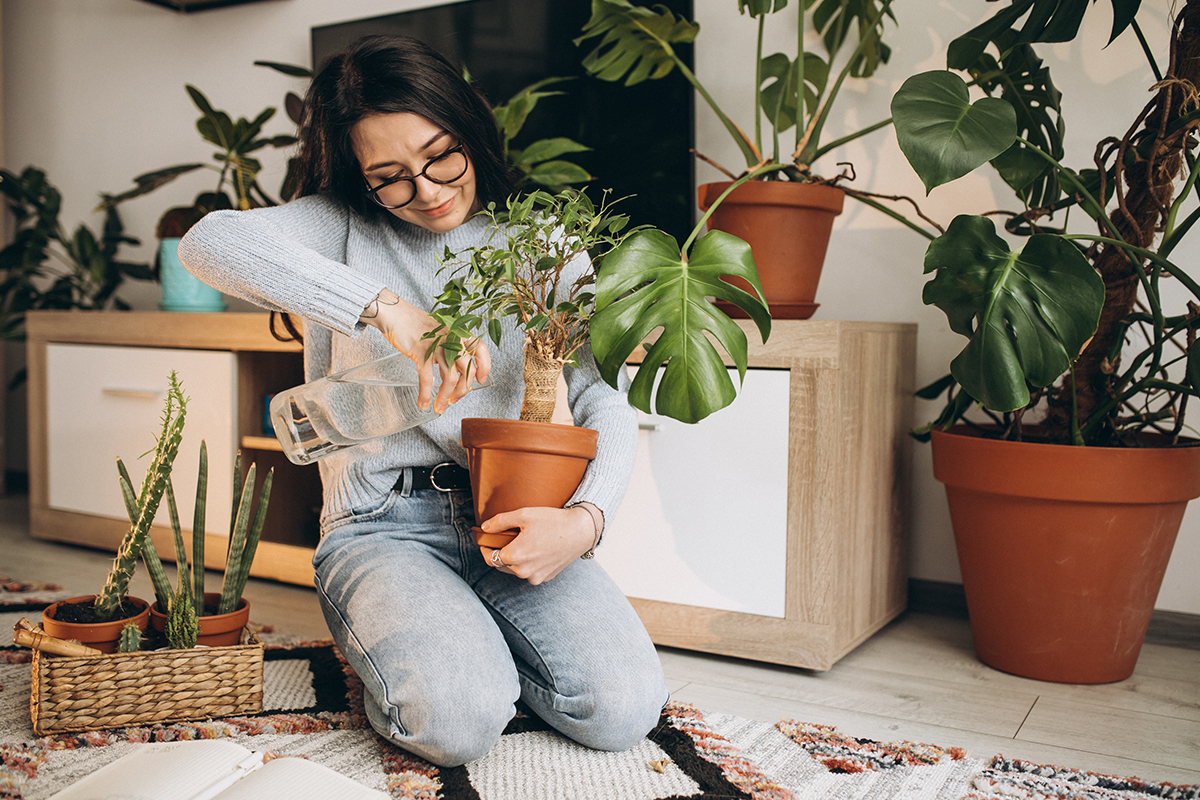Caring for houseplants can seem like a daunting task for those who are new to the hobby. However, with an understanding of the basics, the process will become easy and enjoyable. Let’s look at how to choose the right houseplants and give them proper care.
Choosing indoor plants: what to consider?
To create a beautiful green corner at home, you need to choose the right plants. Consider lighting conditions, humidity, temperature and the level of care you are prepared to provide.
Lighting in the room
Different plants require different amounts of light, so it’s important to assess in advance how bright or shady the area where you’re going to place the flowers is.
Ficus, cacti or succulents are suitable for rooms with bright light. They love the sun and feel good in abundant light. If you have little light in your home, choose shade-loving plants such as sansevieria or zamiokulkas.
Humidity and temperature
Orchids and ferns require high humidity and are best placed in rooms with high humidity, such as the bathroom or kitchen. Cacti and succulents prefer dry air and will do better in rooms with low humidity.
Temperature conditions also make a difference. Most tropical plants like warm climates, but plants from desert regions can tolerate temperature fluctuations.
Level of care for the plants
It is also important to understand how much time and effort you are willing to put into caring for your plants. If you’re a beginner or don’t want to spend a lot of time watering, fertilising and repotting, it’s best to choose plants that are unpretentious: succulents, cacti or zamiokulkas.
Those who are ready to spend more time on care, and more demanding options: violets, orchids or monstera. They require more attentive care, but enjoy beautiful colours and leaves.
Basic rules for caring for indoor plants
Once you have chosen plants, it is important to provide them with the right care. Basic aspects include watering, feeding, repotting and pest control.
Watering indoor plants
Different plants require different levels of moisture. Succulents, for example, can go without water for several weeks, while ferns or orchids need regular watering.
It is also important to pay attention to the quality of the water. The best choice is filtered or room-temperature water. Excessive watering can lead to root rot, so it is important not to overdo it.
Feeding
Houseplants need regular feeding for normal growth. Fertilisers can be applied in the spring and summer when the plants are actively growing. It is important to use specialised fertilisers appropriate for the type of plant. Succulents and cacti need low nitrogen fertilisers, while flowering plants need high nitrogen fertilisers.
Repotting
Most indoor plants need to be repotted every 1-2 years to give them fresh soil and more room to grow. When repotting, it is important to choose the right soil for the type of plant. For example, cacti and succulents need well-drained soil, while orchids need a special substrate that allows the roots to breathe.
Examples of plants for different conditions
To make a more informed choice, let’s look at a few popular types of indoor plants and their requirements for conditions.
Ficus Benjamina
A plant with colourful foliage that requires bright but diffused light. It needs regular watering. This plant will suit those who are prepared to spend a little more time on care.
Sansevieria, or ‘pike’s tail’
One of the most unpretentious plants that can grow under almost any conditions, including low light. It requires infrequent watering as it stores water in its dense leaves.
Monstera
An ornamental plant with large, carved leaves that requires bright, diffused light and regular watering. The Monstera is ideal for large spaces and will be the centrepiece of any interior.
Cacti and succulents
Ideal for those who forget to water their plants. They require lots of light and infrequent watering and are suitable for sunny windowsills.
Ferns
Great plants for shady rooms with high humidity. They need regular watering and spraying as they are sensitive to dry air.
Choosing indoor plants and caring for them should not be intimidating. With the right approach, you can create a beautiful green area at home that will please the eye and improve the atmosphere indoors.


